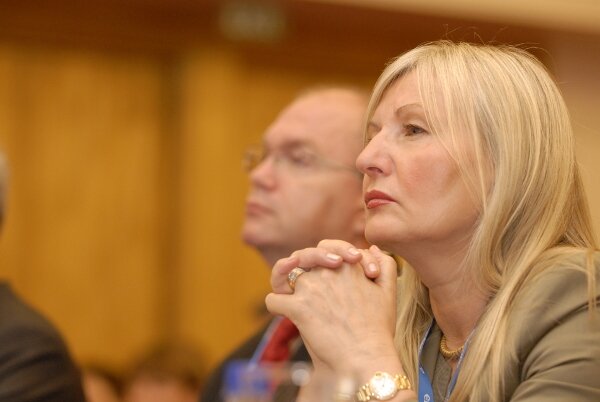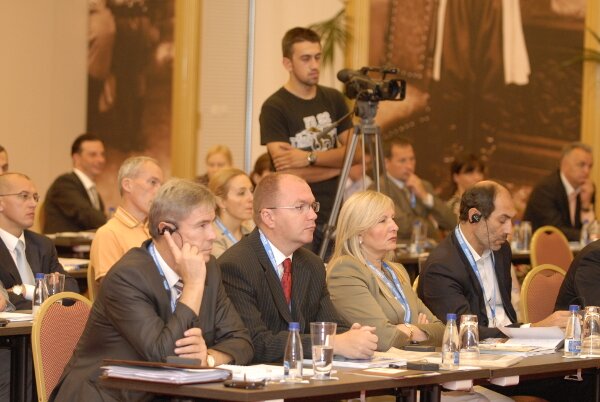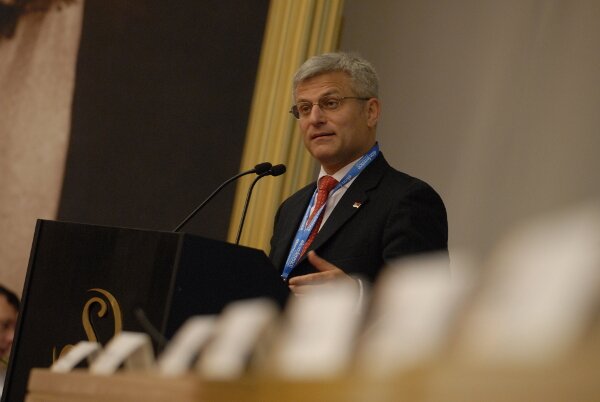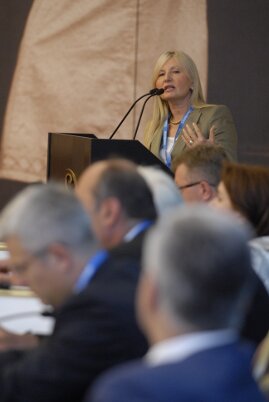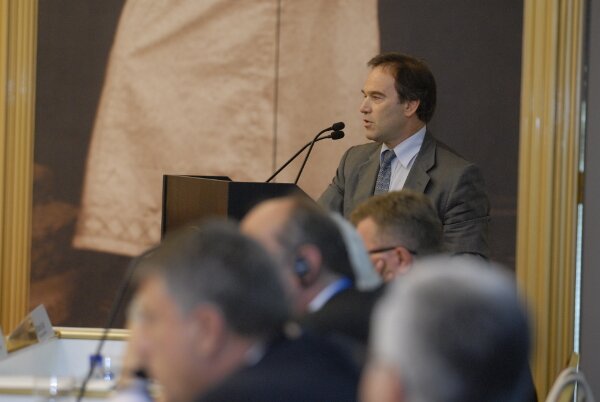Montenegro is building a system of a small and open economy that is subject to shocks from abroad, which began to be felt as far back as September 2008. The banking sector is most affected by the crisis, and it is followed by the aluminum and steel industry, procession industry due to a decrease in the world prices, construction industry due to the high growth recorded in past years, as well as tourism and capital markets, which has had problems even before the crisis escalated.
We can hardly predict whether we have reached the bottom. Regardless of the fact that we have a lot of positive signals, we cannot forecast when the crisis will stop. Inflation has been decreasing since September. A specific characteristic of Montenegro, although unexpected, is that the level of direct foreign investments remained at last year’s level, due to the recapitalization of the Electric Power Company of Montenegro.
The banking sector has a high solvency level. Only two banks have experienced problems, and all the others have maintained acceptable solvency coefficients through recapitalization. At the system level banks have not significantly changed interest rates. At one moment the credit activity stopped, while we now see an opposite trend. Passive interest rates have slightly increased as a result of banks’ policies for attracting deponents.

We have faced the negative consequences of the enormous credit growth, which amounted to 125 percent in 2006, and increased to even 170 percent in 2007; I think that with this we broke the world record. The key problem is that such growth did not follow a growth of risk management quality, and appropriate policy of raising capital and reserves in banks.
What was the influence of the crisis on our banking sector? Our specific characteristic is that at the end of last year and in the beginning of this year we faced negative consequences of an enormous credit growth. In 2006 it amounted to 125 percent, and increased to even 170 percent in 2007; I think that with this we broke the world record. The key problem is that such growth did not follow a growth of risk management quality, and appropriate policy of raising capital and reserves. Another aggravating circumstance was that the Central Bank worked on two tracks. We had to adjust through sublegal regulations that were three times larger than legal ones, and fight consequences of the crisis at the same time.
What helped us is the fact that we had the support of parent banks when their daughter-banks in Montenegro were affected by withdrawal of deposits. We experienced a huge withdrawal of deposits in spite of the full guarantee. Only recently have we managed to determine what exactly the deposit outflow was, and what was a result of the unhealthy credit policy in some banks and the fact that some banks had ceased crediting, which influenced deponents to start spending their money.
In December there was an outflow of more than 750 million Euros of deposits, and the actual amount was 250 million Euros. The rest accounted for “compensation” of deposits and loans, especially due to the fictive cash collateral policy. The deposit outflow amounts to ten percent, which is more or less similar to other countries in the region. A decrease in confidence has been stopped. Industry and citizens spend from the deposit because crediting has stopped. Recapitalization of banks is underway, and I think it will considerably contribute to the revival of credit activity.
We expect loans of about 150 million Euros from KfW and EIB that will be guaranteed by the State, which will help us deal with consequences of the crisis. Potential arrangements with the World Bank and the IMF would certainly facilitate solving the problem of illiquidity in the budget. The crisis has shown where our legal framework is vulnerable. The Central Bank intends to introduce some changes to the law on banks, the framework to be activated in the case of protecting deposits, bankruptcy and liquidation of banks. Having in mind that Euroization has taken place in the Montenegrin economy, we are thinking of using the international funds to be obtained for supporting liquidity of banks.
Since an arrangement with the IMF would positively influence Montenegro, is this the case in Serbia as well, and is it sufficient by itself?
Radovan Jelašić: It was necessary, and time will show whether it is sufficient. In my opinion, we shouldn’t always wait for the IMF to tell us what the situation is like, but it is obviously better to wait for them, and then this institution can be an excuse for implementation of certain measures.
Prior to the crisis we used to have a high volume of capital adequacy. Considerable volume of securities was issued by the NBS, which at the end of September amounted to 245 billion dinars. This is how the NBS sterilized the liquidity surplus in the system which defended us, i.e. amortized a huge part of external costs. The banking system used these securities to defend itself from external shocks. We also had a big problem with savings outflow.
A client understands the terms solvency or capital adequacy only by whether he or she can withdraw their savings or not, which was very important to provide in October. A drastic decrease of foreign currency reserves hasn’t occurred, the State has invested no money in the banking sector and a decrease in compulsory reserves hasn’t taken place either. Prior to the crisis the system was certainly slightly more restrictive, but it later turned out to be much more stable.
Since October 1, 2008 we have been reducing the restrictiveness and supervision level. I would not be surprised if this relaxation continued in the future.
Since October last year NBS has been reducing the level of restrictiveness and supervision. I would not be surprised if this relaxation continued in the same direction. Fiscal policy is much more easily adjusted to good times, and when unpopular measures are to be taken, the maximum of measures is represented by freezing salaries, and the inflation is allowed to do its part of the job. I am not popular when I say that at the end of next year salaries will be really lower by 12 to 14 percent if the projected inflation is fulfilled.
Earlier, depending on NBS measures, the volume of loans increased or decreased. Our objective was to reduce the growth rate, but never to prevent credit activity. In April this year the total sum of loans was below the level recorded in September 2008, regardless of the relaxation we carried out. Growth in May was slightly higher, which means that credit activity is improving.
Everyone likes Keynes, but everyone remembers only the a part of his saying - that when you have a considerable decrease of GDP, the State should be much more aggressive in increasing public consumption; no-one remembers that the same man said that even in good times a State should save money. I don’t know where all those people were several years ago – everyone forgot about Keynes at that time. They obviously like only this part regarding spending, but it is questionable where that money will come from.
Fiscal policy is much more easily adjusted to good times, and when unpopular measures are to be taken, the maximum of measures is represented by freezing salaries, and inflation is allowed to do its part of the job. I am not popular when I say that salaries and pensions will be frozen until the end of 2010, which means that at the end of next year salaries will be lower by 12 to 14 percent if the projected inflation is fulfilled.
Returning to the previous level in Serbia will last much longer. We will wait to see whether it will take three years or longer. The number of uncollectible receivables and the unemployment rate will further aggravate. The entire region can be considered as “countries of temporary welfare”. The question is to what extent all these states are ready to carry out structural reforms. Public consumption is still high. The current problems, extinguishing the fire, are solved well through indebting, but not even one country can solve its structural problem by obtaining a loan from an international institution.
Petar Gošev: Analysts say that fiscal measures in a crisis should be directed to increasing expenditures instead of reducing taxes and increasing transfers. Can world economic measures be applied to small open economies highly declined to exports?
In Macedonia, we have chosen the denar tied with the Euro, i.e. “de facto“ if not “de jure“ fixed exchange rate. So far this has proven to be a successful strategy, since during our 14-year experience we have had the average inflation of 2.5 percent. With this fixed exchange rate solution our space for fiscal stimulation of spending is very narrow, since every percent of an increase in the fiscal deficit increases the percentage of our foreign trade deficit and the current account deficit, which additionally increases the pressure on foreign currency reserves of the Central Bank. We are therefore advised to give up the policy of defending the exchange rate.
In that case the government will have more space for spending, and export competitiveness of the economy will increase. For the time being we say “no” to such an approach, since the last depreciation of denar in 1997 didn’t give results. The denar depreciation stimulates an increase in the inflation rate. Another reason is that there is high Euroization of the economy, and most loans are in Euros or are related to the Euro. Third, if you start depreciation of the domestic currency you cannot stop it easily, but you have to intervene from foreign currency reserves, which will lead to giving up the domestic currency forever




 0,56%
0,56% -2,15%
-2,15%












